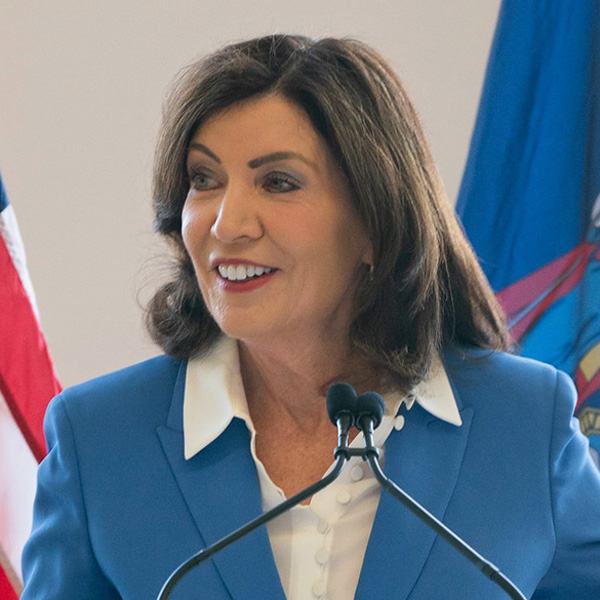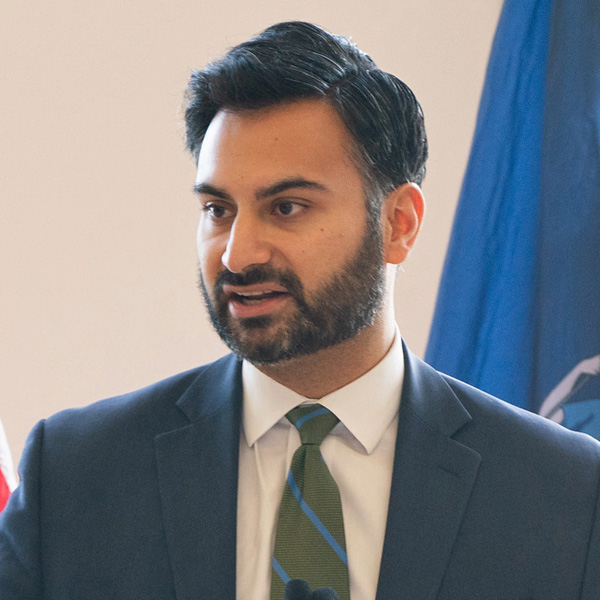Twenty-five renewable energy projects totaling 6.4 GW have been selected for development in New York, including three new offshore wind farms with a combined 4 GW of capacity.
The projects chosen for the conditional contract awards Tuesday now enter the negotiation process. If they all are successful, they are expected to create 8,300 jobs and spur $20 billion in economic development.
Gov. Kathy Hochul called it the largest-ever renewable energy investment by a state.
“Today, we are taking action to keep New York’s climate goals within reach, demonstrating to the nation how to recalibrate in the wake of global economic challenges while driving us toward a greener and more prosperous future for generations to come,” she said.
The onshore projects are a mix of technologies totaling 2,410 MW of capacity: 14 new solar farms, one with co-located storage; six repowered wind farms; one new wind farm; and one return-to-service hydro project. The largest is a 401.6-MW solar farm in central Pennsylvania that will feed into the New York grid.
The offshore component is:
-
- Attentive Energy One — 1,404 MW developed by TotalEnergies, Rise Light & Power and Corio Generation;
- Community Offshore Wind — 1,314 MW developed by RWE Offshore Renewables and National Grid Ventures; and
- Excelsior Wind — 1,314 MW developed by Vineyard Offshore (Copenhagen Infrastructure Partners).
Just 12 days earlier, the state Public Service Commission rejected inflation-related cost adjustments for developers of 90 contracted projects that had said they might not be able to begin construction without more money.
These total more than 12 GW and constitute a large percentage of New York’s vaunted renewable energy pipeline — including almost the entire offshore wind pipeline, which is particularly hard hit by cost increases and supply constraints.
One of New York’s five planned offshore wind farms, the 132-MW South Fork, is under construction and may become the nation’s first utility-scale offshore wind project to generate power.
Developers of the other four planned facilities, totaling 4,230 MW, may need to cancel their contracts and attempt to rebid in future solicitations.
The New York State Energy Research and Development Authority said the strike price for the three offshore wind projects announced Tuesday could vary depending on price indices, federal incentives and other factors. But it is expected to be $96.72/MWh in 2023 dollars as a weighted average and $145.07 as a nominal weighted average over the 25-year contract terms.
This would yield an average charge of $2.93/month for New York electric ratepayers over that period, NYSERDA said. And it is less than the increase developers of the four contracted offshore wind projects had been seeking. In its comments to the PSC on the requests, NYSERDA said they would have resulted in a weighted average of $167.25/MWh for the four contracted projects.
A couple of hours after the PSC rejected the requests Oct. 12, Hochul announced a new 10-point plan to “Expand a Thriving Large-Scale Renewable Industry.” Given recent events, “thriving” might be a stretch, and most of the 10 points were policies and initiatives already in place.
However, the first of the 10 points promised an announcement on contract awards, and she followed through 12 days later — acknowledging the setbacks in passing but focusing on the promise of the next chapter.
Economic Goals
Hochul announced the tentative contracts in an IBEW Local 3 training facility where some of the young people who will build the state’s clean energy infrastructure are learning their trades.
New York’s statutory goals include an energy portfolio that is 70% renewable by 2030 and 100% zero emissions by 2040. It is struggling to stay on schedule and simultaneously using the energy transition as a vehicle for social justice and economic development — particularly in offshore wind, a new industry in which it hopes to become a leader.
The domestic supply chain stands to gain two significant new components in New York with the three offshore wind projects chosen for contracts: a nacelle factory and a blade factory operated by General Electric and subsidiary LM Wind Power USA, respectively. Plans for both were announced this year but were conditioned on the companies securing enough orders to warrant construction.
Hochul announced $300 million in state funding to build the facilities, which she said would attract $668 million in private financing.
National Climate Adviser Ali Zaidi joined Hochul for the event, which he called an investment in the neglected middle class as much as in the environment.
And that is not just in New York, he said: Already, more than 4,000 contracts have been signed in 47 states to supply the nascent U.S. offshore wind industry.
It is, Zaidi said, “an economy that is being built not just to put steel in the ground — or, in the offshore industry, steel in the water — but really steel in the spine of the American middle class.”
All of the projects chosen in New York’s latest round of awards will be eligible for tax credits of up to 50%, he added — if they use domestic components, train apprentices, create jobs in disadvantaged communities and pay prevailing wages.
The Alliance for Clean Energy New York, a trade group that represents the developers chosen for contracts, said the projects would have the economic and environmental benefits the state is trying to achieve.
Fred Zalcman, director of the New York Offshore Wind Alliance, called the contract awards a good change of direction from recent news. “Today’s announcement, awarding three contracts for more than 4,000 MW of offshore wind generation, shows that New York is prepared to double down on this clean, renewable and job-creating resource, and will go a long way towards instilling confidence in a market that has recently faced tremendous headwinds,” he said. “We look forward to working with the governor and other stakeholders in getting these early-stage projects to the finish line.”

